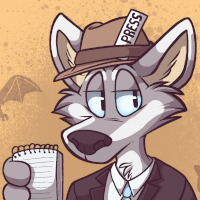Submitted by Fred Patten, Furry’s favorite historian and reviewer.
 Fragments of Life’s Heart, volume 1, editors: Laura “Munchkin” Lewis [&] Stefano “Mando” Zocchi.
Fragments of Life’s Heart, volume 1, editors: Laura “Munchkin” Lewis [&] Stefano “Mando” Zocchi.
Manvel, TX, Weasel Press, June 2016, trade paperback $19.95 (400 pages), Kindle $4.99.
Fragments of Life’s Heart is a new anthology of anthropomorphic stories of Love. “Join us as we explore the many different forms of love—family love, forbidden love, love that embraces what society always taught was wrong.”
This volume 1 contains “seventeen anthropomorphic stories with all different forms of sexuality and relationships, in a journey across genres, worlds, and time.”
“Tending the Fires” by Jess E. Owen features nomadic desert fennecs. Nara, a successful young bard from the Wadi Ocar, returns home for her sister Sarayya’s wedding after six successful years of traveling and learning in foreign lands. Nara looks forward to rejoining her loving family, but although her father, brothers, and sisters embrace her warmly, she is shocked when Arwa, her mother, greets her formally but coldly as an honored guest, not family. Arwa hasn’t even read the six years’ worth of letters that Nara sent home regularly. Nara must discover what she has done wrong in her mother’s eyes, and how to correct it in the midst of a colorful tribal wedding celebration.
Owen creates a rich North African (though it is another planet) setting:
“Nara sat with her family while Sarayya and her new husband made their vows in the blended light of the dying sun, the rising moon and emerging stars, and distant, blue Ocarus.
Time stilled as Nara watched her little sister’s face, glowing, and linked her heart and her life to a new tent, a new family – Nara’s new brother, a whole new addition. Their family had grown. Nara’s heart seemed to swell and expand and encompass the new foxes her sister had come to love, and now, they were all one. As darkness bloomed over them, Nara mingled with the in-laws, rapidly learning names and gossip.
It was not long before the men produced their tablah drums and a stringed rebab, and they broke into long recitations of songs by desert poets, all memorized and passed down for hundreds of years. […]” (p. 33)
In “Transitions” by Mog Moogle, Geoffrey has a secret. Or Freya does. He/she is transgender. The male otter has felt that he was really female ever since puberty. Geoff’s mother has accepted his decision, but his father has stubbornly insisted that he is 100% his son. So Geoff has gone through middle and high school as Geoffrey. Only his best friend, Douglass, a mole, has known his/her secret and has recognized her as Freya – and become her lover. Now that they have both graduated from high school and Doug is going into the U.S. Army, Geoff is set to leave for the university – and he/she’s decided to openly start her new life as Freya. Her mother is supportive, but confronting her father as a girl –
Will his/her father’s love for his offspring transcend his/her sexual identity?
Read the rest of this entry »
 Shock. From beginning to end. If you ever want a book to slap you in the face as hard as possible, this…this is for you.
Shock. From beginning to end. If you ever want a book to slap you in the face as hard as possible, this…this is for you.

 The Familiar: A Paranormal Romance, by Jill Nojack
The Familiar: A Paranormal Romance, by Jill Nojack Dawn, by Marcus J. LaGrone. Illustrated by Minna Sundberg.
Dawn, by Marcus J. LaGrone. Illustrated by Minna Sundberg. Spirit Hunters. Book 3: Tails High, by Paul Kidd. Illustrated.
Spirit Hunters. Book 3: Tails High, by Paul Kidd. Illustrated.
 ROAR volume 7, Legendary, edited by Mary E. Lowd.
ROAR volume 7, Legendary, edited by Mary E. Lowd. Fragments of Life’s Heart, volume 1, editors: Laura “Munchkin” Lewis [&] Stefano “Mando” Zocchi.
Fragments of Life’s Heart, volume 1, editors: Laura “Munchkin” Lewis [&] Stefano “Mando” Zocchi. Helga: Out of Hedgelands, by Rick Johnson. Map.
Helga: Out of Hedgelands, by Rick Johnson. Map. The Digital Coyote, by Kris Schnee.
The Digital Coyote, by Kris Schnee.